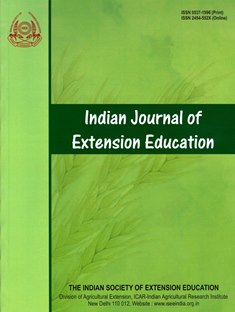Multivariate Typology of Osmanabadi Goat Farming in its Home Tract: A Cluster Analysis
DOI:
https://doi.org/10.48165/IJEE.2022.58405Keywords:
Multivariate typology, Osmanabadi goat, Farm, Households, ClusterAbstract
The study was conducted to identify the typology of the Osmanabadi goat-keeping households and farms in a home tract of the breed during 2020-21. Hierarchical and K mean clustering techniques were used to classify 107 households into three homogenous clusters. In extensively large flock keeping households with large landholdings (C1, n=25, 23%), the respondents were using scientific practices to a great extent than the households with extensively keeping small flock with small landholdings (C3, n=59, 55%). Goat rearing was being the sole farm activity of relatively more households in C3, where primarily women had control over farm decisions and returns than the households who semi-intensively kept medium flock with medium landholding (C2, n=23, 22%). Households in C3 were mostly using open sheds, had lower goat income than the rest of the clusters. Households in C2 were higher in employment generation than households in C3. The typologies of Osmanabadi goat-keeping households showed significant heterogeneity in clusters and critical points which need to be considered to find sustainable solutions. Government policies and extension approaches are likely to be more effective if they consider the heterogeneity in the planning and delivery of extension interventions.
Downloads
Downloads
Published
Issue
Section
License

This work is licensed under a Creative Commons Attribution-NonCommercial-NoDerivatives 4.0 International License.

